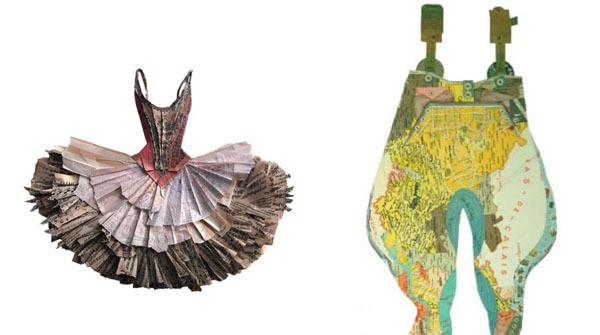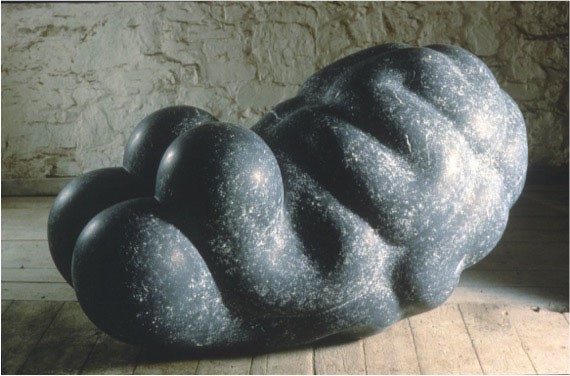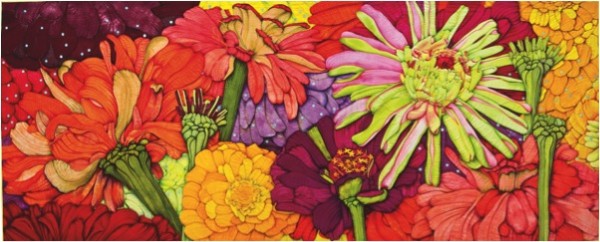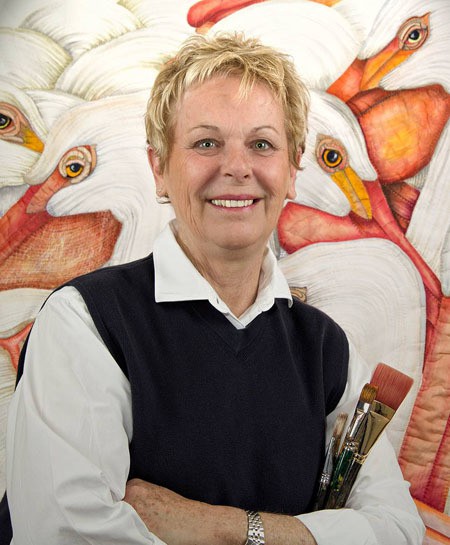What makes one artist succeed over another when they both do good work? It’s a great question!
Guest post by Deborah Blakeley
After having interviewed over 170 artists and artisans from around the world you would think I should have the answer to this question. There are similarities, and there are many and varied reasons for them to be successful.
There is one thing that does flow through all the artists. They are passionate about their work and they all know it is as important to them as breathing. They want to create.
Let me take three examples.
Peter Clark from London works with paper. He collects paper. But he looks beyond the actual paper, and it is through this he is able to take sheet music and create ballet dresses. Or maps and make them into cowboy pants. The paper is there but it is Peter who breathes life into each work.
Peter was unfortunate to have a stroke and it was his need to create that made him battle beyond the physio’s exercises to take up his scissors. He said that cutting and the need to cut gave him back the strength he needed for his art.

peter clark – paper sulpture
Even the very BIG names need motivation and encouragement, like Peter Randall-Page who has been working for over 30 years producing sculptures that are around the world. When I asked him about the Tate Modern acquiring his sculpture Where the Bee Sucks 1991, Peter Randall- Page told the truth; but the truth is humbling. “Honestly, I am still delighted every time a work of mine enters a public collection, but without question the biggest boost was when the Tate bought Where the Bee Sucks. No artist should forget that they need encouragement. This also applies in giving encouragement. Tell others that you enjoy their work if you are able to buy their work.”
“There is no better way to give an artist encouragement than to see a simple red dot against their art.”

Peter Randall-Page – ‘Where the Bee Sucks’ – limestone
A final example is Velda Newman who said that she had taken loads of classes in colour, design and composition to find confidence in herself. Originally a painter, Velda Newman applied her skills and knowledge to textiles. Rather than make quilts similar to others she needed that something ‘special’. “I knew I had to do something to make my quilts stand out from the rest. That’s when I started making large scale quilts. My second quilt won Best of Show at Houston, TX and I have never looked back.”
Artists know when their work is good. Like Velda Newman they need to find that niche where they can stand out, be different so be noticed. Not try to do what someone else is doing or rather has done. Find your niche and go for it.

velda newman – zinnia quilt – 8ft x 18ft, paint and ink on cotton sateen

Velda Newman with her work
Every artist that I have interviewed and will interview has had to decide on the medium that they will work in and master. They have had to leave many other ideas behind and concentrate on the aspect that they love doing and will want to get out of bed each day to do. They have honed their craft and developed the skills and added their very own personality. This leads to invitations, and exhibitions and recognition they have worked very hard and kept within the parameters. They are experts and they want to share their passion with the world.
My personal passion has been to ask all those thousands of questions and build up a site {ZoneOneArts} that has so many different and varied artists who have wanted to share their work with a broader audience. Look at their work, look at your work and develop your own niche. It will lead to success but it will require bucket loads of hard work. Don’t dwell on your mistakes, be like Peter Clark and pick up the scissors and give yourself the strength and determination needed. Good luck!
